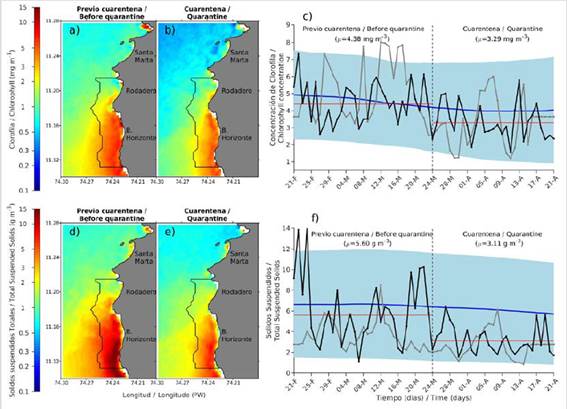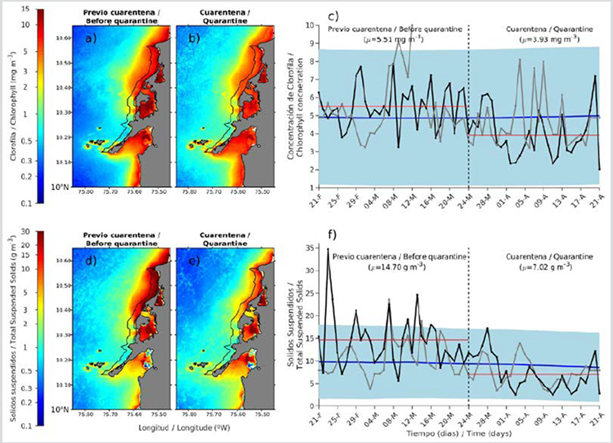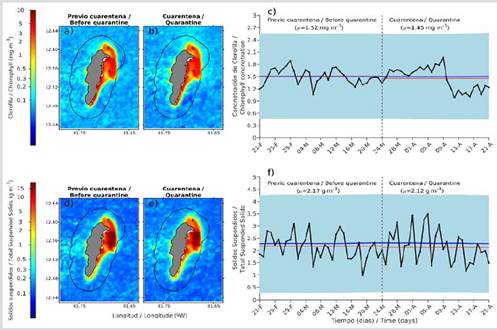The Covid-19 is a highly infectious disease caused by a new type of coronavirus that was first reported in Wuhan (China) on December 31, 2019 (OMS, 2020). The first alerts of the disease were issued in early January 2020 but due to the speed of its spread, on March 11 it was declared a pandemic by the World Health Organization (WHO). According to the Ministry of Health, the first outbreak in Colombia occurred on 3/6/2020. To reduce contagion and prevent the collapse of health services, on 3/17/2020 the Presidency of Colombia declared an Economic, Social and Ecological Emergency (Decree 417) and ordered the first period of Mandatory Preventive Isolation between 25/3/2020 to 13/4/2020 (Decree 457), which was extended successively from 13 to 27/4/2020 (Decree 531), from 04/27/2020 to 11/5/2020 (Decree 539), from 11-25/5/2020 (Decree 636), from 25-31/5/2020 (Decree 639) and from 1/6/2020-1/7/2020 (Decree 749). During the quarantine period, the free movement of people and vehicles was restricted, national and international flights were canceled, national roads were closed, maritime traffic was prohibited, and tourist beaches were closed.
The Covid-19 quarantine had a profound impact on Colombia’s tourism industry. The mandatory isolation and closure of airports, land and maritime terminals, has reduced hotel occupancy by up to 94 % compared to the same period in 2019 (DANE, 2020a, 2020b). In recent years, tourism had established itself as a promising line for the national economy, contributing 3.83 % of Colombia’s GDP, with the Caribbean cities of Cartagena, San Andrés and Santa Marta being the most dynamic tourist destinations (DANE, 2018). For 2018 Cartagena was the second city in the country most visited by foreign tourists, it was the third with the most national tourists and it was consolidated as the main recipient of tourist cruises (Table 1). Likewise, in Santa Marta and San Andrés the arrival of national and international tourism has increased in recent years (MINCIT, 2018). With the declaration of quarantine, the tourist activity in these cities is paralyzed, while new measures are being developed that contemplate the adoption of biosafety protocols for the reopening of a new type of post-Covid-2019 tourism.
Table 1 Tourists arrival to the main tourist destinations in the Colombian Caribbean between 2017-2019 (Citur,2019).

The tourism industry began in Colombia in the 1970s spontaneously and without planning, with the construction of large hotel buildings in areas very close to the coast line, which increased the dumping of untreated waste into the sea, generating the majority of current environmental problems observed in coastal ecosystems. Since 2016, the growing influx of tourists has generated overcrowding events on the most popular beaches such as Barú (Cartagena) and El Rodadero (Santa Marta), in which more than 7,000 tourists per day fill uncontrollably the beaches during the holiday seasons, accelerating erosive processes, pollution and degradation of coastal ecosystems (Williams et al., 2016; El Tiempo, 2017; Rangel et al., 2018).
The sudden interruption of the tourist pressure determined by the Covid-19 quarantine has favored a rapid environmental recovery of the coastal areas during the first weeks of the quarantine. The publication of photos and videos in various media, where the return of dolphins, turtles and shorebirds is observed, together with the renewed blue color of the waters, shows the beneficial effect of quarantine on the environmental quality of coastal zone (Botero et al., 2020). However, beyond these first observations, the magnitude and factors that promote this environmental recovery are still unknown.
Given the scarcity of observational platforms and updated information on the main tourist destinations of the Colombian Caribbean (Cartagena, Santa Marta and San Andrés), to describe environmental changes during the quarantine, satellite data of Chlorophyll-a (Chl-a) and Total Suspended Solids (TSS) were analyzed for 30 days before (21/2/2020 to 23/3/2020) and 30 days after (24/3/2020 to 21/4/2020) of the start of the quarantine (24/3/2020), recorded by the Ocean Land Color Instrument (OLCI) level-2 aboard the Sentinel-3 mission at a resolution of 300 m (https://coda.eumetsat.int/#/home). Both Chl-a and TSS are parameters frequently used to monitor water quality in coastal areas and lakes. The Chl-a is a measure of phytoplankton abundance and a proxy of eutroficarion frequently used to observe blooms due to fertilization by pollutants and nutrients, therefore it is an indicator of the health of aquatic ecosystems (Blondeau-Patissiera et al., 2014). The TSS show the concentration of non-biological particles contributed by rivers or from sediment re-suspension (Gohin, 2011) that reduce the photosynthetic radiation available for benthic and pelagic ecosystems (Cole and Cloern, 1987; Tian et al., 2014 ). The missing data caused by cloud interference were restored by interpolation using DINEOF (Data INterpolates Empirical Orthogonal Functions; Alvera-Azcárate et al., 2005; Beckers and Rixen, 2003). The temporal variability of Chl-a and TSS in the coastal zone was analyzed using the spatial average of these variables in the first 3 km from the coastline. These averages were compared with the 10-year climatological averages (2010-2019) for Chl-a and TSS derived from MODIS-A data, obtained from OceanColor Web (https://oceancolor.gsfc.nasa.gov/).he MODIS-A TSS was estimated using the reflectances perceived by satellite around 667 nm wavelength, using the approximation of Nechad et al. (2010).
In the first 3 km of the coastal zone of Santa Marta (in front of the El Rodadero and Bello Horizonte beaches), a decrease was observed in Chl-a (from 4.38 to 3.29 mg m-3) and TSS (from 5.60 to 3.11 g m-3) during the quarantine period, which constitutes a reduction of 24.9 and 44.5 % respectively (Fig. 1 c and d). The average fields of Chl-a and TSS (Figure 1a-b and 1d-e) showed that this reduction was major in the southern region most affected by the fluvial discharge from the Ciénaga Grande de Santa Marta and the Córdova river. A similar reduction in Chl-a was observed during the same period of the previous year (2019, gray line in Fig. 1), but the TSS of that year remained unchanged. The climatological average of the Chl-a shows that a reduction of Chl-a concentration is a typical condition expected for this time of year, which is possibly linked to the seasonal relaxation of the winds and the coastal upwelling (Correa-Ramirez et al., 2020).

Figure 1 Average concentration of Chlorophyll-a (a, b) - Total Suspended Solids (d, e) - Sentinel OLCI in the coastal zone Santa Marta, 30 days before (a, d) and after (b, e ) of the beginning of Covid-19 quarantine (3/24/2020). In panels c) and f): the black lines show the average temporal evolution in the first 3 km from the coast (polygon in panels a-b and d-e) of the Chl-a and SST respectively; the vertical dotted line shows the start of the quarantine; the horizontal red lines show the temporal mean of these variables 30 days before the start and during the first 30 days of the quarantine; the gray lines show the concentrations for the same period in the previous year (2019); the blue lines show the climatological average calculated over 10 years (2010-2019) from the Modis-Aqua data and the blue shaded area shows one standard deviation around the climatological average.
Similar to what was observed in Santa Marta, in Cartagena a reduction of 28.7 % in Chl-a (from 5.51 to 3.3 mg m-3) and of 52.2 % in TSS (from 14.70 to 7.02 g m-3) was observed without precedents for the same period in 2019 (gray line, Fig. 2 c y f). The climatological averages of Chl-a and TSS (blue line in Fig. 2) for this region are typically kept constant around 5 mg m-3 and 10 g m-3 respectively, therefore the reduction observed in 2020 is not an expected condition for this time of year. The greatest reductions occurred in the northern sector (Tierra Bomba, Boca Grande, Crespo, La Boquilla and Punta Canoas), the most affected by fluvial discharges from the Magdalena River and the Canal del Dique. In front of Barú, no significant changes in concentration were observed.

Figura 2 Concentración promedio de la Chl-a y los SST Sentinel OLCI en la zona costera de Cartagena, 30 días antes y después del inicio de la cuarentena Covid-19. La distribución de los paneles y convenciones es similar a los de la figura 1.
Unlike what was observed in Santa Marta and Cartagena, in the coastal zone of San Andrés, Chl-a and TSS concentrations remained invariably low before and during the quarantine (red lines, Fig. 3 c and f). Furthermore, the average concentrations observed in 2020 were similar to the climatological average. The highest concentrations observed in the eastern sector of the island (Fig. 3a-b and d-e) are possibly an artifact of the satellite estimation, due to the fact that in this sector of shallow depth and high water transparency, the reflectance of the seabed produce an overestimation in concentrations derived from satellite records (Cannizzaro and Carder, 2006).

Figura 3 Concentración promedio de la Chl-a y los SST Sentinel OLCI en la zona costera de la isla de San Andrés, 30 días antes y después del inicio de la cuarentena Covid-19. La distribución de los paneles y convenciones es igual a los de la figura 1.
The reduction observed in the concentration of Chl-a and SST corroborates the recovery of the environmental quality observed during the Covid-19 quarantine in the coastal zone of the main tourist destinations in the Colombian continental Caribbean (belonging to Santa Marta and Cartagena). Although part of this reduction is linked to seasonal changes in the local forcing (relaxation of the trade winds and coastal upwelling), the results also suggest that the observed environmental recovery cannot be exclusively linked to the local decrease in tourist pressure. The coastal zone of Santa Marta and Cartagena is regularly affected by the river discharge of large-flow rivers (like is the Magdalena river), which provide a significant load of pollutants, nutrients and sediments (Restrepo et al., 2018, Torregroza et al., 2020). The observed decrease in the Chl-a and the TSS may also be an effect of remote origin caused by an improvement in the quality of the waters discharged by the rivers, linked to the cessation of polluting productive activities in the Colombian continental territory during the quarantine. This would explain why the insular coastal areas that are not directly affected by river discharges, such as San Andrés, do not present significant changes in their environmental quality. Although the cessation of tourist activity could have favored a beneficial local effect on the populations of seabirds, reptiles and marine mammals, the results suggest that the environmental quality of coastal areas is also intrinsically linked to the productive activities developed inside the national territory.
The Covid-19 quarantine has provided an unprecedented experimental framework for observing the effect of reduced productive activities and tourism in the Colombian coastal zones. Beyond the first observations provided in this note, the quarantine period could be a benchmark for further studies to determine the carrying capacity, recovery, and resilience of coastal ecosystems to human activities.











 text in
text in 



